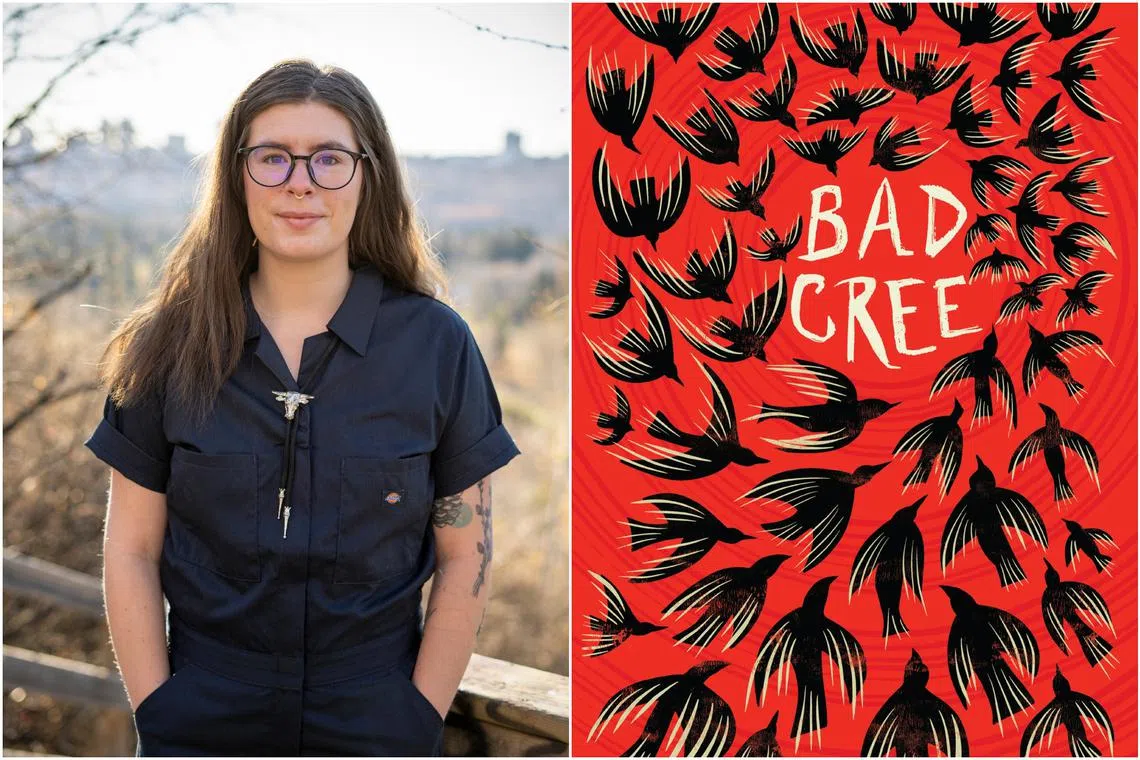Book review: Indigenous horror novel Bad Cree is a chilling tale of grief
Sign up now: Get ST's newsletters delivered to your inbox

Indigenous author Jessica Johns makes her debut with this slow-burn horror novel, Bad Cree.
PHOTOS: SCRIBE, PANSING
Follow topic:
Bad Cree
By Jessica Johns
Fiction/Scribe/Paperback/259 pages/$33.25/Books Kinokuniya
4 stars
A young Cree woman dreams of crows attacking her dead sister’s body, trying to tear out the heart. She decapitates one and wakes with the bird’s head in bed with her.
Indigenous author Jessica Johns, a member of Sucker Creek First Nation in northern Alberta, Canada, makes her debut with this slow-burn horror novel in which millennial Cree reckon with the effects of generational trauma.
Grief-stricken by her beloved grandmother’s death, Mackenzie left her family home in High Prairie, northern Alberta, and moved to Vancouver, where she lives alone and works a tedious job at Whole Foods.
When her sister Sabrina died suddenly of an aneurysm, she did not come home for the funeral – something which her mother and Sabrina’s twin Tracey have not forgiven her for.
But now she is seeing Sabrina in her dreams – and, worse, is bringing things from those dreams back into the waking world.
A murder of crows have started to follow her around the city. Ominous texts from an unknown number appear in her phone; the sender claims to be her dead sister.
Resolving this haunting will mean returning to High Prairie; reconnecting with her family, for whom dreams have often blurred with reality; and revisiting buried trauma from her youth, when something happened to Sabrina in the woods by the lake.
Indigenous horror stories like Bad Cree seek to reclaim myths and folklore that have been appropriated by mainstream pop culture. In this case, it is the wheetigo, an evil spirit of winter that invokes insatiable greed and cannibalistic desires.
More widely known in English as the wendigo, it has featured in the likes of psychological horror series Hannibal (2013 to 2015) and the supernatural film Antlers (2021).
Johns brings the creature back to its roots. A spectre of ecological depredation, it also becomes a monstrous manifestation of the all-consuming, insidious nature of grief.
“We can’t even grieve without something coming for us,” thinks MacKenzie bitterly.
Bad Cree is grounded in a community of women – some men do feature, but mostly on the novel’s periphery – that, while tight-knit, has unravelled with loss.
Mackenzie comes to realise that love does not cancel out loss, as she thought. “I have so much love I’m sick with it. But there will always be bad living alongside it, etched under my skin.”
In this powerful portrait of grief made monstrous, however, there is no living with the bad without love.
If you like this, read: The Round House by Louise Erdrich (Corsair, 2012, $19.94, Books Kinokuniya), in which a 13-year-old boy on an Ojibwe reservation in North Dakota seeks revenge on the man who attacked his mother.


